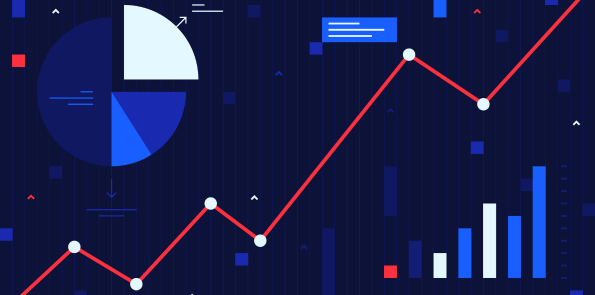Technical Analysis Unleashed: A Comprehensive Guide for Traders

Market Research
Technical Analysis Unleashed: A Comprehensive Guide for Traders
Introduction
Technical analysis is a powerful tool used by traders to predict and analyze price movements in financial markets. By studying historical price data, traders can identify patterns, trends, and other indicators that help them make informed trading decisions. In this comprehensive guide, we will explore the different aspects of technical analysis and provide valuable insights to traders of all skill levels.
Understanding Technical Analysis
What is Technical Analysis?
Technical analysis is the study of historical price and volume data to predict future price movements. It is based on the premise that market participants repeat behavioral patterns, and these patterns can be identified and used to forecast future price action.
Tools and Indicators
Technical analysis involves the use of various tools and indicators to analyze price data. Some of the commonly used tools include trend lines, support and resistance levels, moving averages, and oscillators such as the Relative Strength Index (RSI) and the Moving Average Convergence Divergence (MACD).
Patterns and Trends
Technical analysts also study chart patterns and trends to identify potential trading opportunities. Some popular chart patterns include the double top, double bottom, head and shoulders, and the ascending and descending triangles. Trends, on the other hand, can be classified as an uptrend, downtrend, or sideways movement.
Key Concepts in Technical Analysis
Support and Resistance
Support and resistance levels are essential concepts in technical analysis. Support represents a price level at which buyers are expected to enter the market, causing the price to increase. Resistance, on the other hand, represents a price level at which sellers are expected to enter the market, causing the price to decrease.
Trend Lines
Trend lines are used to identify and confirm trends. An uptrend is formed by connecting the higher lows, while a downtrend is formed by connecting the lower highs. Trend lines can help traders determine the direction of the market and potential support and resistance levels.
Moving Averages
Moving averages are used to smooth out price data and identify trends. They are calculated by averaging the closing prices over a specified period. The most commonly used moving averages are the simple moving average (SMA) and the exponential moving average (EMA).
Oscillators
Oscillators are used to identify overbought and oversold conditions in the market. They measure the speed and change of price movements and help traders anticipate potential reversals. Commonly used oscillators include the RSI, MACD, and the Stochastic Oscillator.
Applying Technical Analysis in Trading
Entry and Exit Strategies
Technical analysis can help traders develop effective entry and exit strategies. Traders can use indicators and patterns to identify potential trade setups and determine the optimal entry and exit points. For example, a trader might wait for a trend line breakout or a specific candlestick pattern to initiate a trade.
Risk Management
Risk management is crucial in trading, and technical analysis can assist traders in setting appropriate stop-loss and take-profit levels. By analyzing support and resistance levels and using indicators, traders can determine the potential risk and reward of a trade and adjust their position size accordingly.
Confirmation with Fundamental Analysis
While technical analysis focuses primarily on price data, traders can further enhance their decision-making process by considering fundamental analysis. Fundamental factors such as economic news, company earnings, and geopolitical events can impact price movements and should be taken into account alongside technical analysis.
The Limitations of Technical Analysis
Subjectivity
Technical analysis is not an exact science and involves a certain degree of subjectivity. Traders may interpret patterns and indicators differently and make different trading decisions based on their analysis.
Market Sentiments
Technical analysis does not take into account market sentiments and emotions, which can influence price movements. Sudden news events or market shocks can override technical analysis signals, leading to unexpected outcomes.
False Signals
Technical analysis is not foolproof and can generate false signals. Traders should be aware that no indicator or pattern guarantees a successful trade. Risk management and proper evaluation of the market conditions are essential to avoid falling victim to false signals.
Conclusion
Technical analysis is a valuable tool for traders looking to gain insights into price movements and make informed trading decisions. By understanding the various concepts, tools, and indicators, traders can unleash the power of technical analysis in their trading strategies. However, it is important to remember that technical analysis is just one piece of the puzzle, and a comprehensive approach that considers fundamental analysis and risk management is essential for trading success.


